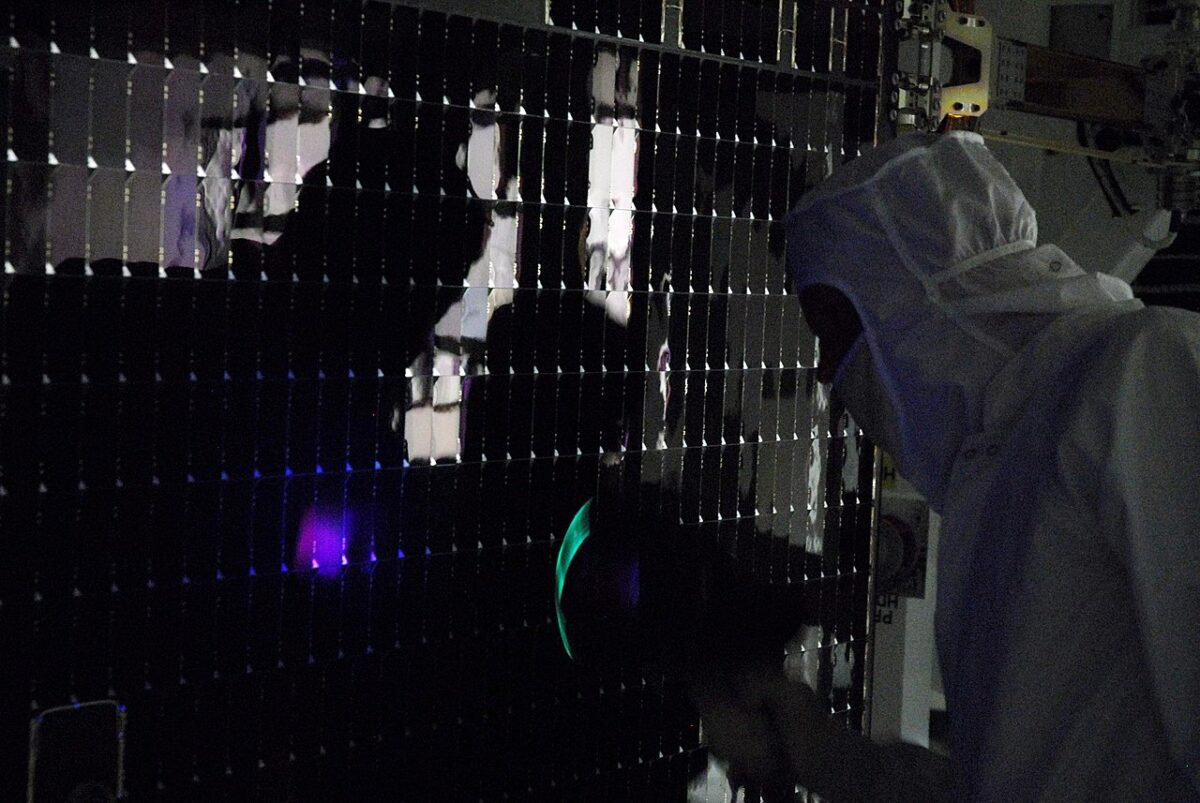A research group from Spain has investigated the impact of temperature and spectral conditions on III-V solar cells operating under ultra-high concentration (UHC) conditions.
Gallium arsenide (GaAs) and other III-V materials – named after the groups in the periodic table they belong to – are among the best known in terms of efficiency potential for solar cells. Their high production costs, however, have so far limited them to niche applications powering satellites and drones. In these devices, low weight and high efficiency are more pressing concerns than the cost of energy produced.
The researchers considered a triple-junction solar cell based on gallium indium phosphide (GaInP), gallium indium arsenide (GaInAs), and Germanium (Ge). “The measurements presented are unprecedented, as there are no previous publications that combine different spectral and temperature-controlled experimental conditions in the UHC range, thus extending the range of studies reported in works carried out at lower concentrations,” they emphasized.
To measure the I–V curves under different temperatures and power concentrations, the scientists built an experimental setup based on a multi-flash indoor solar simulator, which they say allows operating temperatures of up to 85 C and irradiance concentration levels of up to 2,200 suns. Under these conditions, they produced several sets of I-V curves based on 30 measurements per combination of temperature and concentration.
“In a first approximation, the curves show that both open-circuit current (Isc) and short-circuit voltage (Voc) increase with irradiance,” they found. “However, while Isc increases with temperature, Voc decreases. Thus, the parameters exhibit similar behavior in the UHC regime to that observed at lower concentrations.”
As for the short-circuit current, they identified a linear increasing dependence on temperature at constant irradiance levels and said it depends on irradiance. Considering the open-circuit values as a function of the irradiances at different temperatures, they also found a “linear fitting that depicts an increasing dependence on irradiances and a good linear fitting to the natural logarithm of the irradiance.” However, they have also found a negative linear dependence of open-circuit voltage on temperature at constant irradiance levels.
Popular content
Furthermore, when they analyzed the cell fill factor, the academics found a decreasing dependence as temperature and irradiance increase. “The data indicate a linear decreasing dependence of efficiency with the logarithm of irradiance,” they specified. “With respect to temperature, it shows a close linear relationship between cell efficiency and temperature at each irradiance level studied.”
The team also observed a strong correlation between the relative variations of open-circuit voltage and the efficiency with temperature. In addition, they conducted an analysis of cell response measurements to spectral variations in the UHC regime by utilizing the spectral matching ratio (SMR) factor, which is the ratio of the photogenerated currents of adjacent subcells under the same irradiance levels.
“For SMR< 1 values the spectrum is redshifted (with lower power density at short wavelengths compared to the standard), and less generation is obtained in the top subcell,” the scientists stated. “In contrast, for SMR> 1, the middle subcell has lower generation levels although the total current is not equally affected by the same relative deviations of SMR. In the opposite case, with SMR< 1, the contribution of the top subcell is much lower than that of the middle subcell in the case of SMR> 1.”
Their findings were presented in “Multi-junction solar cell measurements at ultra-high irradiances for different temperatures and spectra,” published in Solar Energy Materials and Solar Cells. The group comprised researchers from the University of Jaen and the Andaltec Technological Center.
This content is protected by copyright and may not be reused. If you want to cooperate with us and would like to reuse some of our content, please contact: editors@pv-magazine.com.


1 comment
By submitting this form you agree to pv magazine using your data for the purposes of publishing your comment.
Your personal data will only be disclosed or otherwise transmitted to third parties for the purposes of spam filtering or if this is necessary for technical maintenance of the website. Any other transfer to third parties will not take place unless this is justified on the basis of applicable data protection regulations or if pv magazine is legally obliged to do so.
You may revoke this consent at any time with effect for the future, in which case your personal data will be deleted immediately. Otherwise, your data will be deleted if pv magazine has processed your request or the purpose of data storage is fulfilled.
Further information on data privacy can be found in our Data Protection Policy.